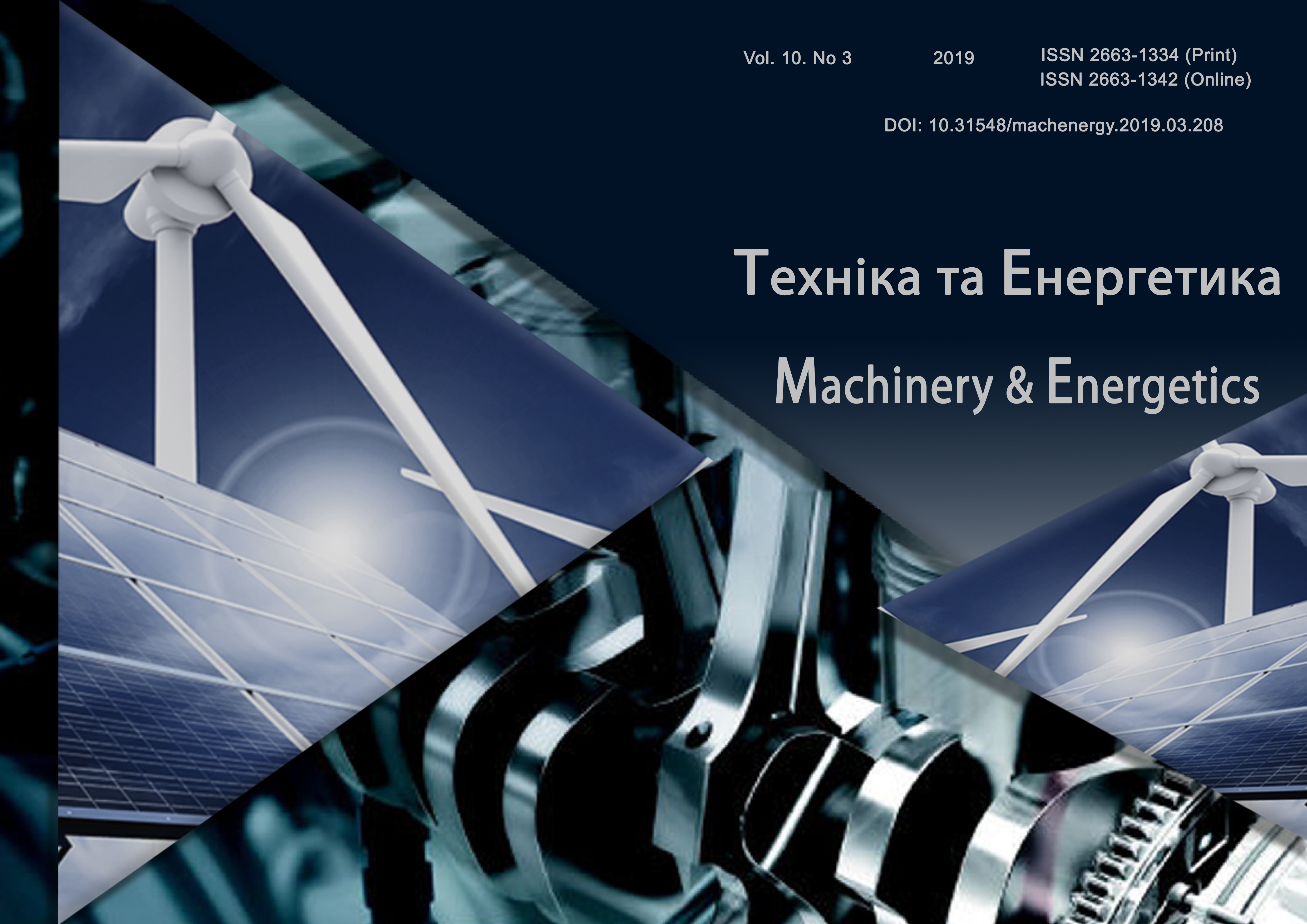Analytical model of availability and operating life of combine harvesters
DOI:
https://doi.org/10.31548/machenergy2019.03.173Keywords:
system availability, efficiency, food processor.Abstract
In the development of technological maps of harvest is not considered the life of the processor and its technical condition. Not counting the previous period of operation of combines and probable values of indicators of technical condition leads to significant errors in the prediction of the timing of the harvest. For machines brief seasonal the most important indicator of reliability as remontoprigoden systems are statistical and the probable values of the developments between regular failures and downtime on the bounce. A comprehensive indicator of health recovery systems (objects) using the coefficients of technical readiness Kg, which is calculated as the ratio of mean time between failures for mean time between failures plus the average idle time for elimination of failures.
The author presents in the planning of harvesting time necessary to consider the life of the harvesters and to amend the performance indicators taking into account the likely decrease in this indicator of technical condition through the availability.
The article identifies that the specific decrease in productivity per unit reduction of the coefficient of readiness for combines is thirty tons of early grain threshing.
References
Kalinichenko D. Yu., Rogovskii, I. L. (2017). Analytical position determination of the coefficient of dynamic parameters of the technical condition of combine harvesters. Technical and technological aspects of the development and testing of new equipment and technologies for agriculture of Ukraine. Doslidnitske. Vol. 21 (35). 55-61.
Kalinichenko D. Yu., Rogovskii, I. L. (2017). Systems analysis and strategies for technical maintenance of combine harvesters and their parts. Scientific Herald of National University of Life and Environmental Science of Ukraine. Series: Technique and energy of APK. Kyiv. Vol. 258. 380-390.
Kalinichenko D. Yu., Rogovskii, I. L. (2017). Artificial cognitive systems in the processes of technical maintenance of combine harvesters. Scientific Herald of National University of Life and Environmental Science of Ukraine. Series: Technique and energy of APK. Kyiv. Vol. 262. 353-361.
Kalinichenko D. Yu., Rogovskii, I. L. (2017). Mathematical apparatus of the description of the route maintenance of combine harvesters in accordance with the detection of combinations of failures.Scientific Herald of National University of Life and Environmental Science of Ukraine. Series: Technique and energy of APK. Kiev. Vol. 275. 337-346.
Kalinichenko Dmytro, Rogovskii Ivan. (2017). Decision for technical maintenance of combine harvesters in system of RCM. MOTROL. Lublin. Vol. 19. No 3. 179-184.
Kalinichenko Dmytro, Rogovskii Ivan. (2017). Modeling technology in centralized technical maintenance of combine harvesters. TEKA. Lublin-Rzeszów. Vol. 17. No 3. 103-114.
Voytyuk, V. D., Rublyov, V. I., Rogovskii, I. L. (2016). System guidelines for quality assurance of technical service of agricultural machinery. Kiev. NULESU. 360.
Rogovskii, I. L. (2015). Recovery Assembly units of agricultural machines. Bulletin of Kharkov National Technical University of Agriculture named Peter Vasilenko. Kharkov. Vol. 159. 224-232.
Rogovskii Ivan. (2014). Stochastic models ensure efficiency of agricultural machinery. Motrol: Motorization and power industry in agriculture. Tom 16. № 3. 296-302.
Rogovskii, I. L. (2017). Conceptual framework of management system of failures of agricultural machinery. Scientific Herald of National University of Life and Environmental Science of Ukraine. Series: Technique and energy of APK. Kiev. Vol. 262. 403-411.
Kalinichenko Dmytro, Rogovskii Ivan. (2018). Method for Determining Time of next Maintenance of Combine Harvesters. TEKA. An International Quarterly Journal on Motorization, Vehicle Operation, Energy Efficiency and Mechanical Engineering. Lublin-Rzeszów. Vol. 18. No 1. 105-115.
Rogovskii I., Grubrin O. (2018). Accuracy of converting videoendoscopy combine harvester using generalized mathematical model. Scientific Herald of National University of Life and Environmental Science of Ukraine. Series: technique and energy of APK. Kyiv, Ukraine. vol. 298, 149-156. doi: 10.31548/me.2018.04.149-156.
Viba J., Lavendelis E. (2006). Algorithm of synthesis of strongly non-linear mechanical systems. In Industrial Engineering - Innovation as Competitive Edge for SME, 22 April 2006. Tallinn, Estonia, 95-98.
Luo A.C.J., Guo Y. (2013). Vibro-impact Dynamics. Berlin: Springer-Verlag. 213. https://doi.org/10.1002/9781118402924
Astashev V., Krupenin V. (2017). Efficiency of vibration machines. Proceedings of 16th International Scientific Conference "Engineering for rural development". Jelgava, Latvia, May 24-26, Latvia University of Agriculture. Faculty of Engineering. Vol. 16, 108-113.
Zagurskiy О., Ohiienko M., Rogach S., Pokusa T., Titova L., Rogovskii I. (2018). Global supply chain in context of new model of economic growth. Conceptual bases and trends for development of social-economic processes. Monograph. Opole. Poland, 64-74.
Rogovskii I. L. (2019). Analytic mechanism of recovery of agricultural machinery based on residual resource. Machinery & Energetics. Journal of Rural Production Research. Kyiv. Ukraine. 2019, Vol. 10, No 2, 175-179.
Downloads
Published
Issue
Section
License
Relationship between right holders and users shall be governed by the terms of the license Creative Commons Attribution – non-commercial – Distribution On Same Conditions 4.0 international (CC BY-NC-SA 4.0):https://creativecommons.org/licenses/by-nc-sa/4.0/deed.uk
Authors who publish with this journal agree to the following terms:
- Authors retain copyright and grant the journal right of first publication with the work simultaneously licensed under a Creative Commons Attribution License that allows others to share the work with an acknowledgement of the work's authorship and initial publication in this journal.
- Authors are able to enter into separate, additional contractual arrangements for the non-exclusive distribution of the journal's published version of the work (e.g., post it to an institutional repository or publish it in a book), with an acknowledgement of its initial publication in this journal.
- Authors are permitted and encouraged to post their work online (e.g., in institutional repositories or on their website) prior to and during the submission process, as it can lead to productive exchanges, as well as earlier and greater citation of published work (See The Effect of Open Access).

